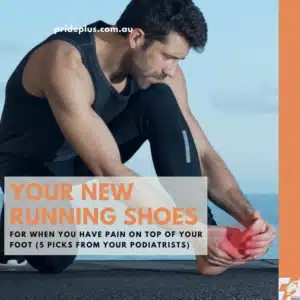As an occupational physiotherapist I’m passionate about return to work planning. In the past I’ve talked about some of the key factors you need to consider when you return to work after an injury. In that article we looked at shovelling. Let’s get into it further as we move onto the next phase, the planning and exectution.
Imagine for a moment you have hurt your back. Ouch. Your injury happened in a rather unfortunate situation at work. As a smartie looking to get better you make an appointment to see your physiotherapist for treatment.
First, there is a physical assessment looking at your mobility/strength and special tests to hone in on the injured structure (disc/muscle/joint), followed by a prediction of how long it will take to recover.
The treatment might consist of a range of symptom modification techniques like manual hands on therapy or massage, taping, dry needling, education around how the pain is an output of the brain and appropriate stretches and strengthening exercises to return to work.
All good and quite routine in fact.
I am hoping my smug tone will prompt you to challenge me…
“What is this PridePlus difference when it comes to return to work planning?”
Comprehensive Workload Management
And that is a mouthful, whatever does that mean you wonder?
Well, we understand (either intuitively or from our previous post on our blog)
Injury risk = load > capacity to handle that load
↓Injury risk = ↓Load ↑Capacity
According to the holy grail of injury management, we need to reduce the load and increase the capacity and build that positive buffer between the two.
This positive buffer would be useful as ‘insurance against future injuries’.
Let’s apply the above concept of ‘Comprehensive Workload management’ in a real-life situation, shall we?
We shall use the same example of shovelling.
| Reduce Load | Increase Capacity |
| Shovel Type | Shovelling Technique |
| Shovel Load | Strength, Flexibility, Control |
| Shovelling Rate | Sleep, Stress Management, Nutrition |
| Throw Height | |
| Throw Distance |
Strategies To Reduce The Load
1. Choosing the right shovel for the job
Right weight: opting for lighter shovels like fibreglass ones.
Right length: with the shovel upright, the handle should reach elbow height.
Adaptation: shovels with a handle on the mid-shaft can reduce back discomfort, as it reduces the amount of bending needed
2. Rate of shovelling:
The recommended rate is around 15 scoops per minute, not more than 15 minutes continuously.
Anything beyond this, fatigue builds up quickly. This could result in injuries.
3. Shovel loads
Optimal weight around 7kgs (weight of the shovel + load), for anything >7kgs, reduce the rate of shovelling to 6-8 scoops per minute.
4. Throw distance and Throw height
The optimal throw distance is 1m and the throw height is 1.3m.
Strategies To Increase Capacity:
1. The right way to shovel
Manual handling techniques tend to be subjective.
Can you predict the good and bad shovelling technique by eyeballing it? Bad ones here refers to postures that place a higher load on the back.
It seems incredulous, but physiotherapists are darned good at ‘eyeballing’. We have research to prove it.
So what constitutes a good shovelling technique?
To my trained eye, it would look smooth and co-ordinated like a rowing motion. The whole body would effortlessly follow-through, not just lifting with the arms and back.
I would rephrase the popular “lift with your legs instead of the back” adage with “lift with your legs AND back, using your arms efficiently”
- Keep your feet apart for a wider/stable base.
- Work in a radius close to your body to avoid overreaching.
- Turn your feet in the direction of the throw, instead of just twisting your back.
If you haven’t been shovelling the ideal way, I know you are hesitant to try it because of the steep learning curve ahead of you.
We know old habits die hard. We also know that athletes perfect their technique by repeating it again and again. You can too. You are no different from any other athlete.
2. Strength, flexibility, control
To improve your back’s ability to handle the load, we need to improve its strength, flexibility and control.
If you are waiting for me to unveil the best exercises for the back, I am sorry to disappoint you.
A good physio will not only assess the capacity of the injured tissue but of the whole kinetic chain and design a customised exercise plan to target the deficiencies. No one size fits all.
3. Sleep, stress, nutrition
One cannot underestimate the role they play in injuries and return to work planning.
Comprehensive Workload Management
Shovelling workload = weight per minute/total weight for 15 minutes at a given throw distance/height.
This is the external load. This in turn determines the internal workload, which happens to be higher in shovelling.
The injured back might not be able to tolerate the given external/internal load. How do we manage this then? Unlike sports, we are often unable to sit it out on the bench.
Can we massage your back to recovery?
What should you do until the effects of strength training become visible, which could take weeks?
What alternate duties are suitable?
How do we quantify the workload that you can do with an injured back?
At what rate do we progress your workload?
With the above example of shovelling, we have learnt the tricks to manipulate both work related and individual factors to reduce load and increase capacity.
This can be applied to not just shovelling but all types of work, forklift driving, operating machinery to brick-laying. This is the comprehensive way to manage workplace injuries and return to work safely.
Comprehensive Workload Management defines the way we do all our assessments, treatments and return to work plans at PridePlus Health. Not just pulling numbers out of a hat or guessing your return to work date.
Return to work after an injury with pride.
If you’re keen to return to work after an injury with pride, you can learn more about workplace injuries here.
References
Canadian Centre for Occupational Health and Safety, 2020. Shovelling. [10/10/2020].




